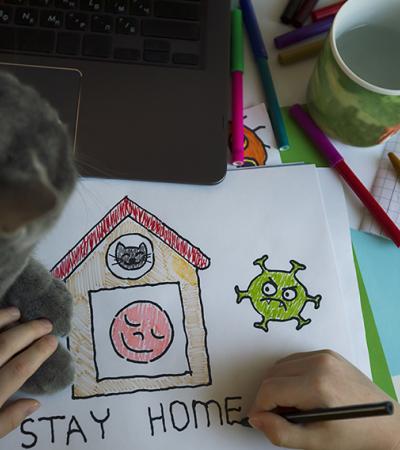As we look to fall 2020 and our start to the school year, one thing is certain: it will be like no other start we have experienced before. Many districts have already decided to begin the year virtually, and others are sure to follow. Districts starting with a hybrid model of mixed virtual and face-to-face learning will also face challenges that we have not yet encountered.

One challenge that stands out to us as school librarians: getting to know our students and staff. When the COVID-19 pandemic hit in spring 2020 and we went virtual, we had an advantage: we had had until March to get to know our students, faculty and staff of our school communities. We knew these folks, so it wasn't a huge leap to continue our relationships with them through a screen. But what will this look like in the fall, when school librarians are faced with a group of new faces?
Today we want to focus on one piece of the puzzle: building relationships in a virtual setting. We believe that this is the key to everything — having relationships that work in a virtual setting will lead us to revising our plans and learning to collaborate even though we are not face-to-face or on a “normal” school schedule.
Will this screen-based relationship-building process be a hassle? Yes. Will it be worthwhile? Yes. Building a sense of community makes a difference. Research tells us that students who feel a higher sense of belonging are happier, healthier and more engaged learners in the school community.
We want our students, staff and school community to know that the library is there to support, delight and teach. To do this virtually, consider offering some or all of the following.
Hold virtual conferences for your classes
In elementary, this might look like a set time for doing a story and discussion, or sharing an activity on a database. In middle and high school, why not collaborate with teachers and have your intro to the library lessons become virtual? Students could continue to do many of the same activities that we have written about in the past to connect, only this time, virtually. These include the Amazing Race scavenger hunt, National History Day and remembering that we are all in this together, and utilizing some of these books and activities to build community virtually.
Office hours
Communicate times you will be available to meet with teachers and students “live.” Actually turn on your camera so students can make contact with you and see who you are and how you sound. Offer hours to parents and guardians as well. Let them see who you are and how you can ensure that their child is successful.
Be a team player
Jump into as many department meetings and team meetings as you can. Listen and share. This will help your teachers build trust with you and know that they can rely on you to collaborate with them. They are all new to virtual teaching and learning as well; having a friendly and technologically savvy collaboration partner will be a bonus!
Show them what a library is all about
Demonstrate what you can do. Ask for time at your virtual faculty meetings to show a tool or share a best practice. Curate short tutorial videos on the platforms you will be using. This is important for students, parents and guardians, and teachers. Parents have a huge role in the success of their child this fall. Make explainer videos that provide support.
Offer “coffee chats”
Offer a casual hour where kids can discuss books they love or share something they have learned from exploring a database. It doesn't have to be formal learning; learning comes from sharing. Anyone who has worked in an elementary school library knows that those kindergarten and first grade hands fly up when you ask if anyone wants to share.
Make small personal connections
Finally, reach out to students. If possible, allow students to place books on hold in your circulation system for curbside pickup if you are not face-to-face. Add a little note, even if it’s just a sticky note that says “enjoy!” with your name signed on it. Students will notice and appreciate that you are making that gesture to connect.
This virtual world we are living in has its challenges, but getting to know our students should be one challenge we are willing and able to overcome. How do you plan to rise to the challenge this fall? What will you do to create a virtual presence, to connect with your kids, community and staff?




